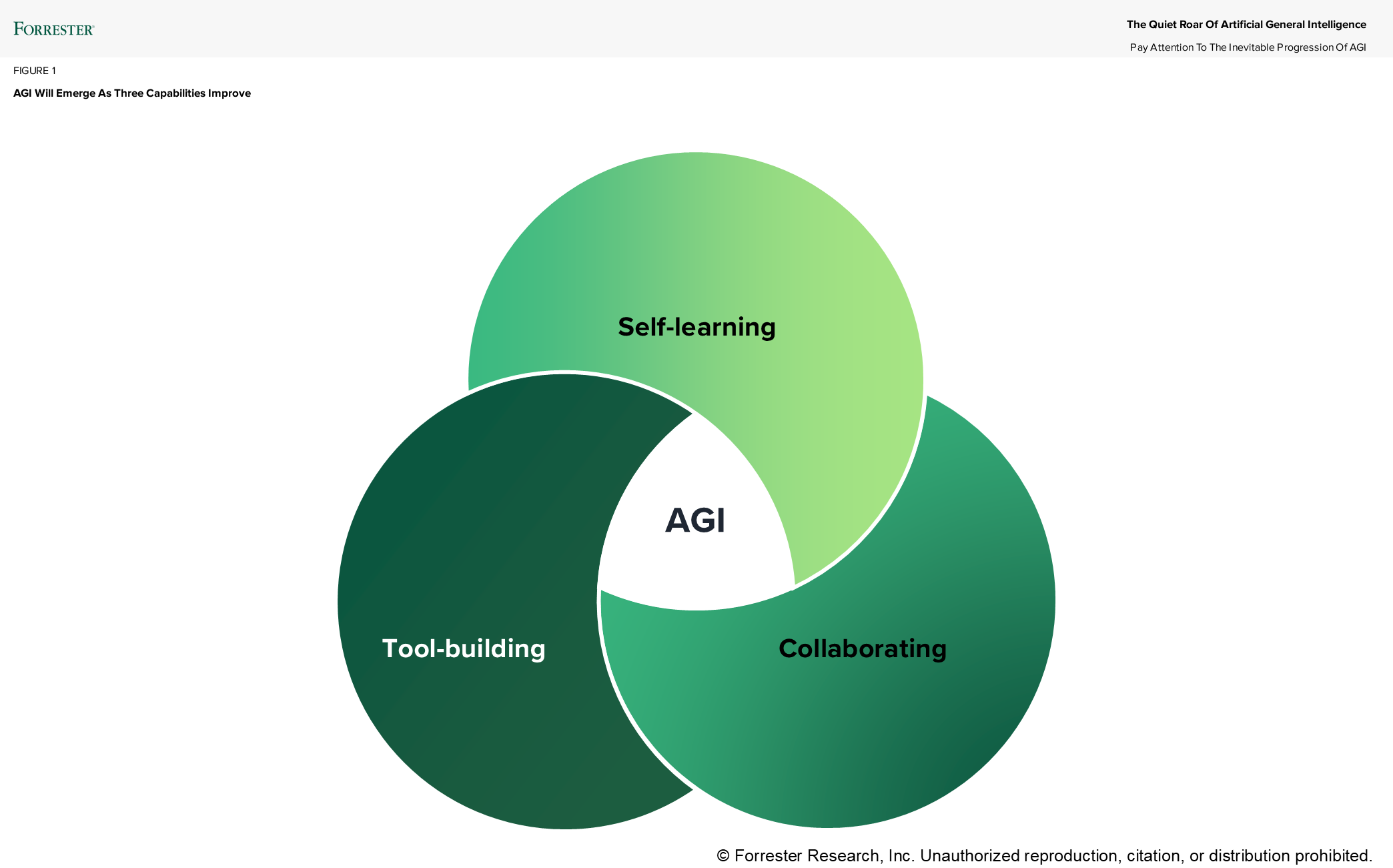Are We Ready To Talk AGI Yet? Yes. Maybe. No. All Of The Above.
All of the above, because the conversation about artificial general intelligence (AGI) as a serious research topic is happening at the very moment the AI market is wobbling over a perceived bubble, with a lack of returns on generative AI projects and GPT-5 having a lackluster showing. Despite these headwinds, now is not the time to be dismissive but rather to look at the long view of what’s to come: AI is the seventh big wave of technological change, and AGI is the ultimate progression of that engine of disruption.
Our latest report, The Quiet Roar Of Artificial General Intelligence, makes it clear that AGI is inevitable. It will not arrive in one explosive leap but as a progression of capabilities that can be tracked, measured, and prepared for. The question is not if but when and how — and that is why you should care. But you need to know exactly what it is first and cut through the noise to plan for what’s next.
A Clearer Way To Talk About AGI
Until now, the language around AGI has been muddled. Hollywood and pundits have blurred it with superintelligence, while software vendors are busy “agent-washing” their products with inflated claims that sound like AGI is already here. The media, meanwhile, is now hyping an inevitable AI winter. None of this helps enterprise leaders make decisions for the long term. We define AGI through a pragmatic and functional lens: software that can autonomously act in pursuit of goals across domains by learning new skills, collaborating with humans and machines, and building software tools.

This capabilities-focused definition avoids fuzzy comparisons to human intelligence or economic abstractions. Instead, it gives leaders observable criteria with which to track AI progression, especially its relevance in an enterprise context.
AGI As A Trend, Not An End
We believe that AGI is a trend, not a destination. Over the last couple years, the AGI debate has been stuck on speculative questions of when machines might surpass humans. That framing is unhelpful. What matters is the observable path of progress already underway, which we map across four stages:
- Competent AGI: effective within one domain under supervision, executing multiday tasks, critiquing its own work, and refining outcomes
- Independent AGI: operating across related domains with minimal oversight, negotiating priorities, and building departmental-scale systems
- Strategic AGI: managing long-running initiatives across multiple domains, leading cross-functional efforts (e.g., supply chain optimization, R&D), developing new knowledge, and even founding businesses
- Superintelligent AGI: if AGI ever surpasses humans in most intellectual endeavors, we cannot predict its impact and recommend that clients avoid focusing here — it is pure speculation
Normalizing The AGI Conversation
The goal of this research is not just definition but normalization. By providing a clear definition, a staged progression with some key inflection points, and business implications, we are giving leaders the tools to start planning today. This is just the beginning of Forrester’s work on AGI. We invite technology vendors, research labs, adopters, and business leaders to join us in this effort. The risks are real, but so are the rewards.
Want to hear more about AGI? I’ll be presenting a keynote called “Agentic To AGI — It’s The Journey, Not The Destination” at Forrester’s upcoming Technology & Innovation Summit North America, November 2–5 in Austin. Check out the full agenda and make plans to meet us there — and start preparing now for the quiet roar of AGI.
